A romantic journey back to Chiayi, overnight stay, and pursuit of fireflies
People often ask, when does the firefly viewing season in the Greater Alishan area begin? When is the best season? Where is the best place to watch fireflies?
In fact, the appearance time of fireflies varies in different parts of the Alishan area alone. Basically, every year at the junction of late spring and early summer, thousands of fireflies gather here, which is the best time to watch fireflies. There are as many as 42 species of fireflies in the Alishan area, accounting for about two-thirds of the total in Taiwan. Different species of fireflies can be seen all year round, from low altitudes to medium and high altitudes.
The firefly season of Alishan is from mid-April to mid-June every year. Fireflies are scattered all over the mountains and valleys like stars, shining with the stars in the sky. At dusk, when night falls, walking along the forest path where fireflies are flying is like walking on an avenue of stars. If you want to have the most romantic and surprising encounter with fireflies, you must come to Alishan.
Manman Huijia is close to Chiayi Railway Station and Wenhua Road Night Market, making it the best choice for accommodation during the firefly season. You can roam around the city and enjoy delicious food during the day, and then head to Alishan in the evening to enjoy the romance and surprises brought by fireflies. Whether you are exploring natural wonders or returning to the city to experience the lively atmosphere at night, Manman Huijia can provide you with a convenient and comfortable accommodation experience for your journey!
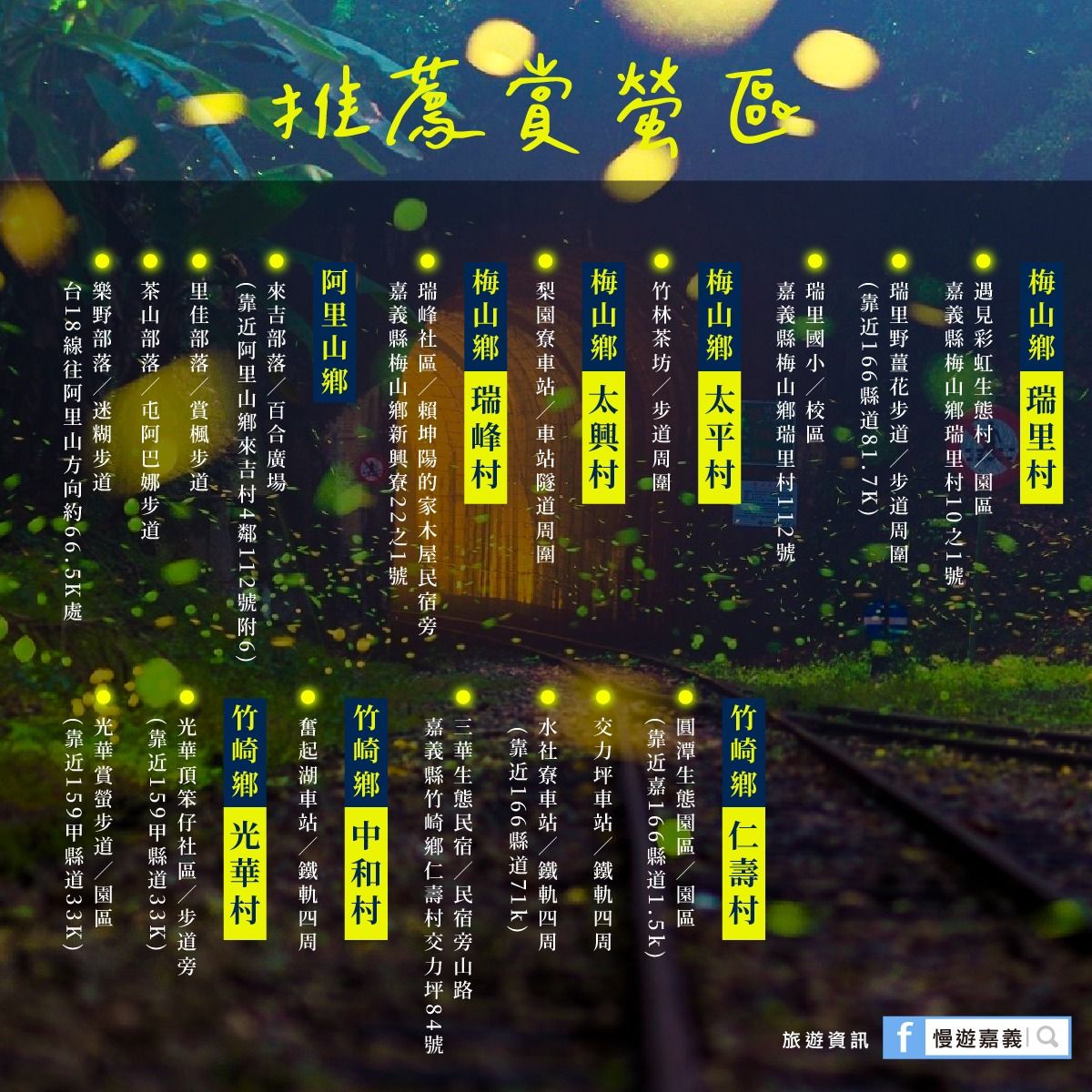
Firefly species introduction
Depending on the environment in which the larvae live, fireflies can be roughly divided into two categories: aquatic and terrestrial. The majority of species in Taiwan are terrestrial, and their populations mainly live in humid terrestrial environments; there are also a few aquatic species that live in clean waters. Apart from adults, pupae or larvae are usually not easy to find because they mostly move on the surface or in water. Different species of fireflies have their own unique set of light-emission rhythms, which allow members of the same species to communicate with each other. Each species of firefly has its own specific season of emergence.
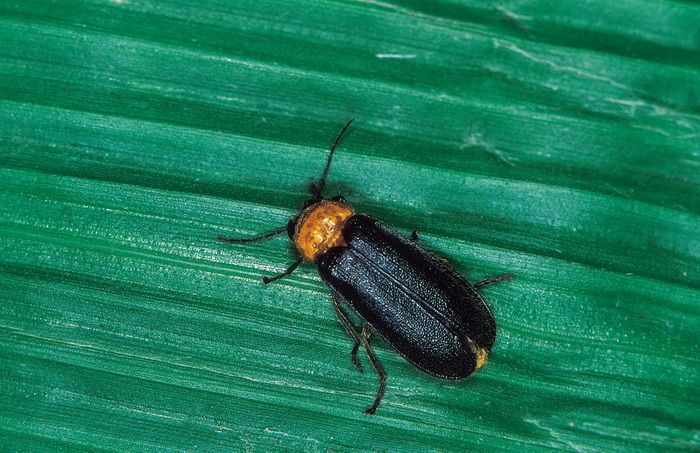
【Black-winged Firefly】
The black-winged firefly is the most numerous firefly in Taiwan. Its pronotum is orange-yellow and its antennae are thread-like. It likes to gather in open grasslands or on both sides of riverbeds. Adult black-winged fireflies appear from March to May each year and live in mountainous areas below 1,500 meters above sea level. Because their population is larger than other species, they have always been the protagonists of firefly-watching activities throughout Taiwan. Therefore, spring is the best season for firefly-watching in Taiwan. The interval between each flash is about 1 to 2 seconds. Luminous color: yellow-green light.
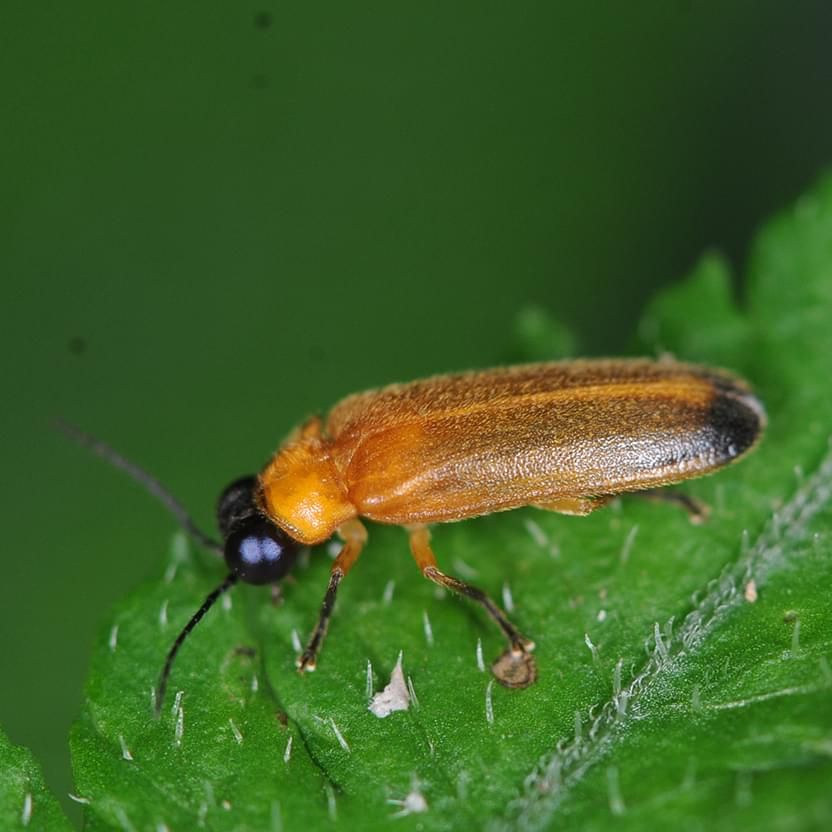
【Big end black firefly】
It is about 1 to 1.5 centimeters long. Its pronotum and wing elytra are both bright yellow and slightly transparent, while the tips of its wings are black. It is one of the few fireflies that visit flowers in Taiwan. It is distributed in mountainous areas below 2,000 meters above sea level and occurs from March to June. Adults are often seen gathering high up in trees at night, flying and glowing. They are also active during the day, visiting flowers and mating. Luminous color: orange-yellow light
【Small-end black firefly】
The pronotum is yellowish brown, the forewings have many fine hairs, and there are obvious black spots at the ends. The breeding period is later than that of the big-terminal black firefly, and the flash speed is also faster.
The small-ended black firefly looks very similar to the large-ended black firefly, which can easily lead to confusion. The main difference between them is that it emits light faster and does not drag a long torch. The two can still be distinguished by their light emission speed and body size. Light color: Rapid flashing orange-yellow light
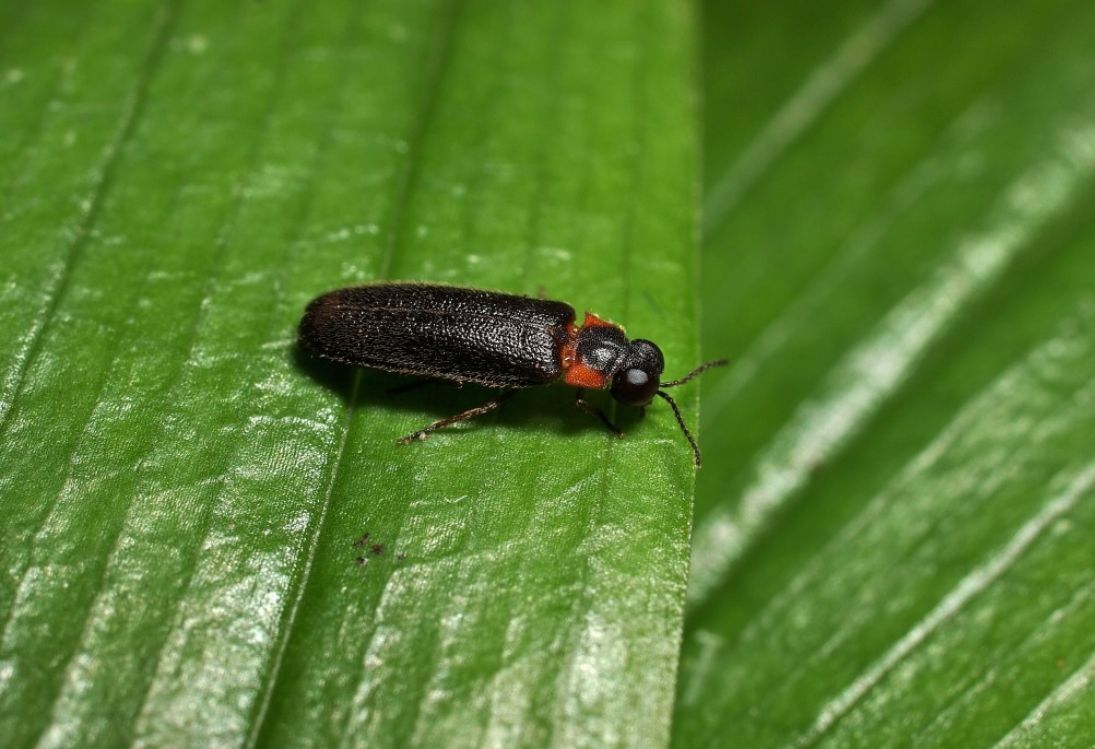
【Firefly】
From late March to late June, adult fireflies appear mostly in plains and low-altitude mountainous areas. The adults are the smallest fireflies in Taiwan. The pronotum is reddish-brown with obvious black scutels, the forewings are black, the light organ has two segments, and the flashing frequency is extremely high. Luminous color: yellow-green

【Three-section firefly】
The occurrence period is approximately from May to July every year, distributed in mountainous areas below 800 meters.
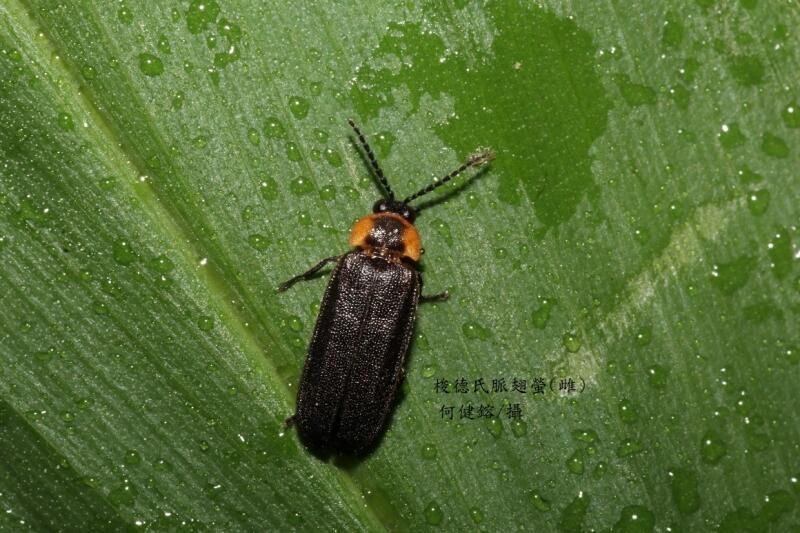
[Thunder's vein-winged firefly]
Distributed in forests in low-altitude mountainous areas, the occurrence period is from March to October. Occasionally, a small number of individuals can be seen flying vertically up and down; when there are a large number of them, they can be seen gathering briefly during the flight.
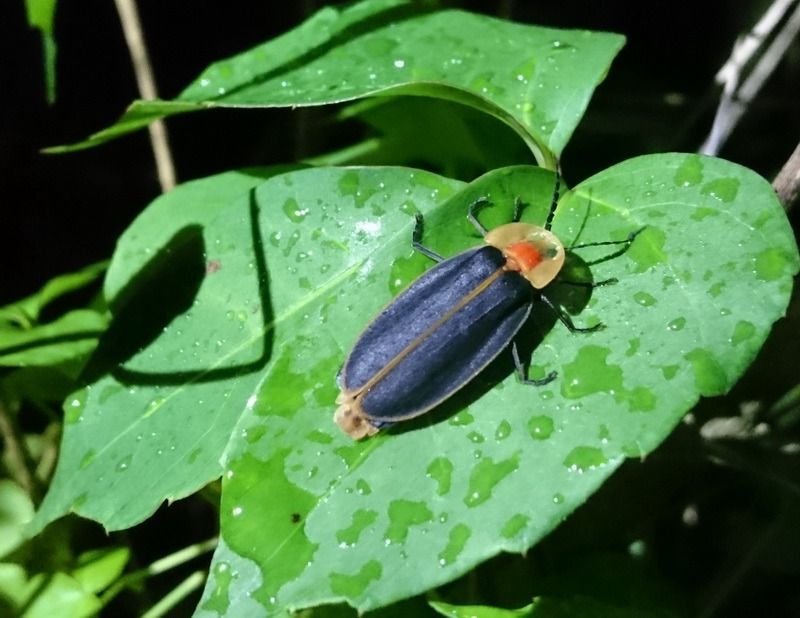
【Mountain Window Firefly】
It is distributed in Taiwan's medium and low altitude mountainous areas, and the occurrence period is from October to December. Due to its large size, the fluorescence it emits is very bright. After nightfall, they mostly move around under the forest, and occasionally some of them will fly to the edge of the forest and glow near the road. They are the largest fireflies in Taiwan and are commonly known as big window fireflies. Luminescent color: Continuous yellow-green fluorescence
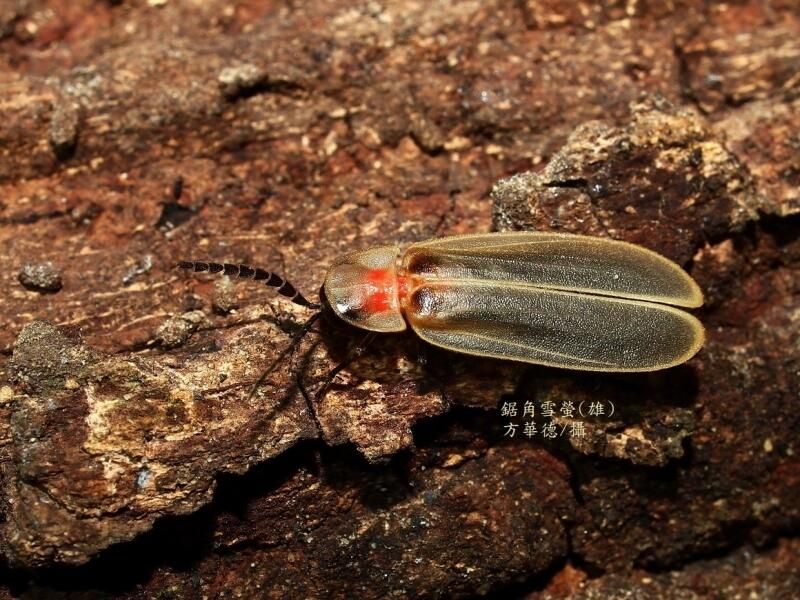
【Sawhorn Snow Firefly】
It is distributed in medium to high altitude mountainous areas above 800 meters above sea level, and the occurrence period is from October to December. It tends to occur earlier with increasing altitude. It is still active in a low temperature environment of 10-15℃. Female insects can occasionally be seen glowing at fixed points in the grass and on slopes.
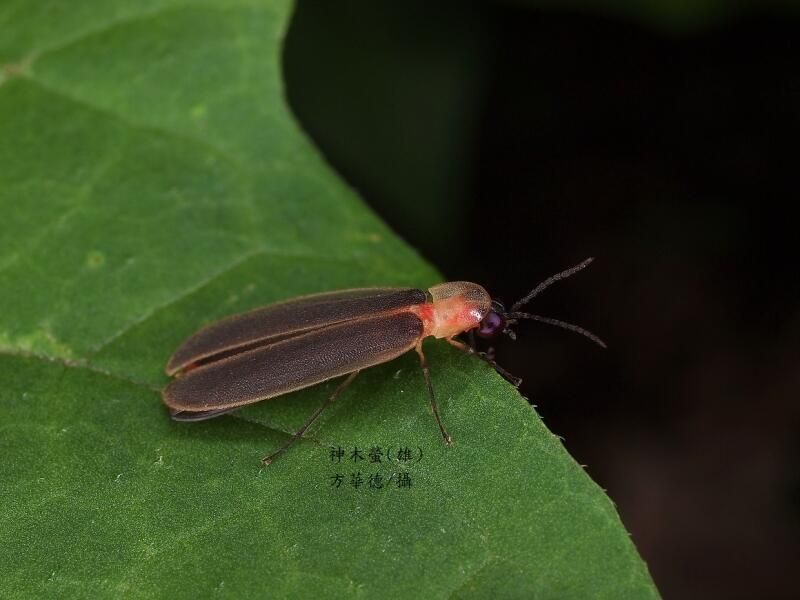
【Shintoku Firefly】
It is distributed in the medium and high altitude mountainous areas of Taiwan, and occurs from November to March of the following year. It often lives under forests, and tends to occur earlier with increasing altitude. It is still active in a low temperature environment of 5℃. Female insects often glow on the embankments beside forest paths or by clinging to branches or leaves.
Things to note when watching fireflies
Since fireflies will not appear if the temperature is too low or it has rained heavily, it is best to confirm the local weather conditions before setting out to watch fireflies to avoid being disappointed! We also urge everyone to pay attention to safety when watching fireflies, slow down and avoid falling. More importantly, please be sure to abide by the following regulations when watching fireflies. We hope that in addition to watching fireflies, everyone can also work together to maintain the ecological environment of fireflies so that fireflies can survive sustainably.
- Please wear long-sleeved shirts and long pants to avoid mosquito bites.
- Please wear rain boots, cloth shoes, non-slip shoes or long rain boots to prevent snake bites; there are many snakes in the mountains, so be careful to avoid snake attacks.
- Nights with a full moon, low temperatures or heavy rain are not suitable for firefly viewing.
- When the sun just sets and the sky turns dark, the number of fireflies will gradually increase and they will be the most active. After nine o'clock, the glow will decrease.
- Safety is very important when watching fireflies at night. Remember to go in groups and look out for each other.
Please follow the "Three No's and One No": No noise, no catching fireflies, no direct exposure of flashlights, and no light pollution.
- Do not catch fireflies with your hands. They will die if they are frightened or touched by your hands.
- Please don't make loud noises, otherwise the fireflies will hide!
- Please do not bring a flashlight, but you can use a special flashlight (introduction below) or take photos with a flash to avoid disturbing the mating of fireflies.
You can use a special flashlight: In order to avoid more light pollution, please prepare a flashlight and wrap it with red cellophane, and then tie it up with a rubber band; please remember not to use it continuously. - There is no light pollution. Do not use flash to shoot fireflies to avoid seriously disturbing the fireflies in the process of courtship and affecting reproduction.
【Return to Jialing】
Reservation hotline: 05-222-3366
Official LINE customer service: @808eokmf
Address: No. 175, 177, Minsheng North Road, West District, Chiayi City


